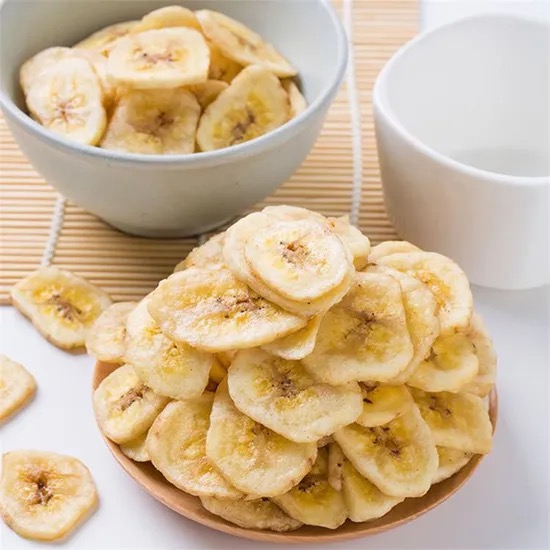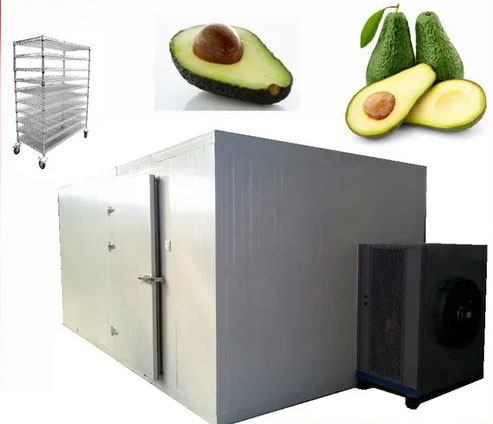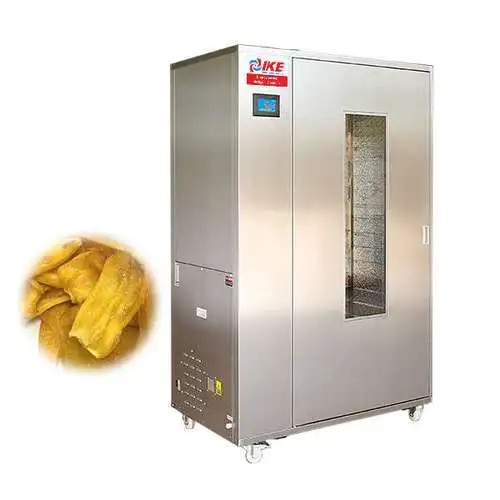
Content Menu
● Understanding Food Dehydration
● Key Features of a Good Food Dehydrator
● Types of Food Dehydrators
● Benefits of Using a Food Dehydrator
● Choosing the Right Model
● Popular Brands and Models
● Tips for Successful Dehydration
● Common Mistakes to Avoid
● Conclusion
● FAQ
>> 1. What foods can I dehydrate?
>> 2. How long does it take to dehydrate food?
>> 3. Can I leave my dehydrator running overnight?
>> 4. Do I need to pre-treat fruits before dehydration?
>> 5. Is it safe to dehydrate meat?
● Citations:
Food dehydrators are an essential kitchen appliance for those who want to preserve food, create healthy snacks, or prepare for outdoor adventures. Understanding what makes a good food dehydrator can help you choose the right model for your needs. This guide will explore the key features, benefits, and considerations when selecting a food dehydrator.

Understanding Food Dehydration
Dehydration is a method of preserving food by removing moisture, which inhibits the growth of bacteria, yeast, and mold. By reducing the water content of fruits, vegetables, meats, and herbs, dehydrators extend their shelf life while retaining essential nutrients.
The process involves circulating warm air around the food at low temperatures (typically between 90°F and 160°F), allowing moisture to evaporate without cooking the food. This gentle drying process helps maintain flavor and nutritional value.
Dehydration has been used for centuries as a means of food preservation. Ancient civilizations relied on sun-drying techniques to store fruits and meats for long periods. Today, modern food dehydrators offer more controlled environments that enhance the efficiency and quality of the drying process.
Key Features of a Good Food Dehydrator
When looking for a high-quality food dehydrator, consider the following features:
- Even Airflow: A good dehydrator should have a fan that circulates air evenly across all trays. This ensures consistent drying and prevents hot spots that can lead to uneven results. Models with horizontal airflow are particularly effective as they allow for better heat distribution.
- Adjustable Temperature Control: Different foods require different drying temperatures. An adjustable thermostat allows you to set the ideal temperature for various items, from fruits to jerky. Most dehydrators offer a range between 95°F and 155°F.
- Capacity: The number of trays and their size determine how much food you can dehydrate at once. Larger models with multiple trays are ideal for bulk drying, while smaller units may be sufficient for occasional use.
- Material Quality: Look for dehydrators made from durable materials like stainless steel or BPA-free plastic. Stainless steel models tend to be more robust and easier to clean.
- Timer Functionality: A built-in timer allows you to set the dehydration time and forget about it until it's done. This feature is particularly useful if you plan to run the dehydrator overnight or while you're away from home.
- Ease of Cleaning: Removable trays that are dishwasher-safe simplify cleanup after use. Some models also feature non-stick surfaces that make it easier to remove dried foods.
Types of Food Dehydrators
There are two main types of food dehydrators:
1. Stackable Dehydrators: These units consist of several trays stacked on top of each other. They are often more affordable but may require tray rotation during use to ensure even drying.
2. Box or Shelf Dehydrators: These models have a larger footprint and typically include horizontal airflow systems with fans located at the back or sides. They provide better airflow and are more efficient for drying larger batches.

Benefits of Using a Food Dehydrator
Using a food dehydrator comes with numerous advantages:
- Healthy Snacks: Homemade dehydrated snacks like fruit chips, jerky, and vegetable crisps are healthier than store-bought options, which often contain preservatives and added sugars.
- Cost-Effective: Dehydrating your own food can save money in the long run by allowing you to buy in bulk during harvest seasons or sales.
- Waste Reduction: Using a dehydrator helps reduce food waste by preserving fruits and vegetables that might otherwise spoil.
- Versatility: Dehydrators can be used for a variety of foods, including fruits, vegetables, herbs, meats, and even meals for camping or hiking.
- Flavor Enhancement: Dehydration concentrates flavors in foods, making them taste richer and more intense. For example, sun-dried tomatoes have a much stronger flavor compared to fresh ones.
Choosing the Right Model
When selecting a food dehydrator, consider your specific needs:
- Frequency of Use: If you plan to dehydrate food regularly, invest in a higher-quality model with more features.
- Types of Food: Consider what types of foods you'll be dehydrating most often. If you plan on making jerky or drying meats, ensure your model can reach higher temperatures (at least 150°F).
- Space Availability: Assess your kitchen space before purchasing a dehydrator. Larger models require more counter space but offer greater capacity.
Popular Brands and Models
Several brands stand out in the market for their quality and performance:
- Excalibur: Known for its high-capacity models with adjustable thermostats and horizontal airflow systems. Ideal for serious home preservers who need flexibility in drying various foods simultaneously.
- Nesco: Offers budget-friendly options with stackable trays that are great for beginners or occasional users looking to try dehydration without significant investment.
- COSORI: Features sleek designs with digital controls and excellent performance ratings in tests for even drying. Many users appreciate its user-friendly interface and preset functions that simplify operation.
Tips for Successful Dehydration
To achieve the best results when using your food dehydrator:
- Prepare Food Properly: Wash fruits and vegetables thoroughly before slicing them into uniform pieces to ensure even drying. For meats, trim excess fat as it can go rancid during storage.
- Use Parchment Paper: When drying sticky foods like bananas or apples, place parchment paper on trays to prevent sticking and make cleanup easier.
- Monitor Drying Progress: Check on your food periodically during dehydration to ensure it's drying evenly. Rotate trays if necessary (especially in stackable models).
- Store Dried Foods Properly: Once dried, store your foods in airtight containers in cool, dark places to extend shelf life further. Vacuum sealing is an excellent option for long-term storage.
Common Mistakes to Avoid
Avoid these common pitfalls when using a food dehydrator:
- Overcrowding Trays: Placing too much food on trays can restrict airflow and lead to uneven drying. Always leave space between pieces for optimal air circulation.
- Ignoring Temperature Settings: Not adjusting temperature settings according to the type of food can result in poor texture or flavor loss. Always refer to guidelines specific to each type of food being dried.
- Not Testing Doneness: It's crucial to test dried foods before storing them; they should be pliable yet firm without any moisture pockets remaining inside.
Conclusion
A good food dehydrator is an invaluable tool for anyone looking to preserve food efficiently while maintaining flavor and nutrients. By considering features such as airflow design, temperature control, capacity, material quality, and ease of cleaning, you can select the best model suited to your needs. Whether you're preparing snacks for hiking trips or simply want to reduce food waste at home, investing in a quality dehydrator will pay off in deliciously dried foods that can be enjoyed year-round.

FAQ
1. What foods can I dehydrate?
You can dehydrate various foods including fruits (like apples and bananas), vegetables (like tomatoes and peppers), herbs (like basil and parsley), meats (like beef jerky), and even meals for camping.
2. How long does it take to dehydrate food?
The time required varies based on the type of food and thickness of slices. Generally, fruits take 6-12 hours; vegetables take 5-10 hours; meats require about 4-10 hours depending on thickness.
3. Can I leave my dehydrator running overnight?
Yes! Many models come with timers that allow you to set them before bed and wake up to perfectly dried snacks without worry.
4. Do I need to pre-treat fruits before dehydration?
Some fruits benefit from pre-treatment (like soaking in lemon juice) to prevent browning during dehydration; however, it's not always necessary depending on personal preference.
5. Is it safe to dehydrate meat?
Yes! As long as you follow proper guidelines regarding temperature (at least 150°F) and drying times, dehydrating meat is safe and yields delicious jerky that can be stored long-term.
Citations:
[1] https://dehydratorreview.net/articles/what-look-good-food-dehydrator
[2] https://thruhikers.co/dehydrators/
[3] https://pleasanthillgrain.com/resources/dehydrators-buying-guide
[4] https://create.vista.com/photos/dehydrator/
[5] https://www.youtube.com/watch?v=mtDzdYoyeR8
[6] https://www.youtube.com/watch?v=lEUA2t2XD5M
[7] https://www.youtube.com/watch?v=8HC8hu5aa14
[8] https://www.seriouseats.com/best-food-dehydrators-5216308
[9] https://www.freepik.com/free-photos-vectors/food-dehydrator
[10] https://www.youtube.com/watch?v=rR2G5UO-5Ms
[11] https://www.thepurposefulpantry.com/tips-for-buying-a-dehydrator/
[12] https://www.allrecipes.com/longform/best-food-dehydrators/
[13] https://www.thespruceeats.com/best-food-dehydrators-4077285
[14] https://www.lowes.com/n/buying-guide/best-food-dehydrator-buying-guide
[15] https://www.youtube.com/playlist?list=PL6ygl2lNPriMYQczUR28rhP8Q_g1odJjJ
[16] https://www.choice.com.au/home-and-living/kitchen/benchtop-cooking/buying-guides/food-dehydrators
[17] https://www.nytimes.com/wirecutter/reviews/best-food-dehydrator/
[18] https://www.hachettebookgroup.com/storey/buying-food-dehydrator/
[19] https://www.foodandwine.com/lifestyle/kitchen/best-food-dehydrators
[20] https://nymag.com/strategist/article/best-food-dehydrators.html
[21] https://www.eatingwell.com/affiliate/7904760/best-food-dehydrators/
[22] https://www.youtube.com/watch?v=rXNIHzcE8F0
[23] https://www.istockphoto.com/de/bot-wall?returnUrl=%2Fde%2Fphotos%2Fdehydrator
[24] https://www.youtube.com/watch?v=Zl4wTcCPJu0
[25] https://www.facebook.com/Clarasconfectioneryng/videos/how-to-use-a-food-dehydratorfood-dehydrators-are-still-available-in-various-size/410620696266909/?locale=zh_CN
[26] https://www.youtube.com/watch?v=iGVUpeTAdKM
[27] https://www.istockphoto.com/de/bot-wall?returnUrl=%2Fde%2Fphotos%2Ffood-dehydrator
[28] https://www.youtube.com/watch?v=JRArvU4PDVc
[29] https://www.youtube.com/watch?v=KsXfxFt9KRc
[30] https://stock.adobe.com/search?k=dehydrator
[31] https://www.youtube.com/watch?v=9DSGcVhjHEc
[32] https://www.rawliving.co.uk/products/how-to-use-a-dehydrator-with-recipes-video
[33] https://www.pinterest.com/smallkitchenap2/dehydrators/
[34] https://www.youtube.com/watch?v=_rYXnlrPUM4
[35] https://www.rawblend.com.au/video-demonstrations-tommy/sedona-dehydrator-videos/
[36] https://www.youtube.com/playlist?list=PL71uE0jHe7onrQE-Q4rCTbbDOkRVl7cQu
[37] https://www.tiktok.com/@freshoffthegrid/video/7063481870511787310
[38] https://www.youtube.com/watch?v=j9I8htmXTuA
[39] https://www.backpackingchef.com/cosori-dehydrator.html
[40] https://www.reddit.com/r/dehydrating/comments/11kewug/buying_a_dehydrator_share_your_tips_please/
[41] https://www.backpackingchef.com/food-dehydrator.html
[42] https://www.youtube.com/watch?v=m1K2mbk8WZo











